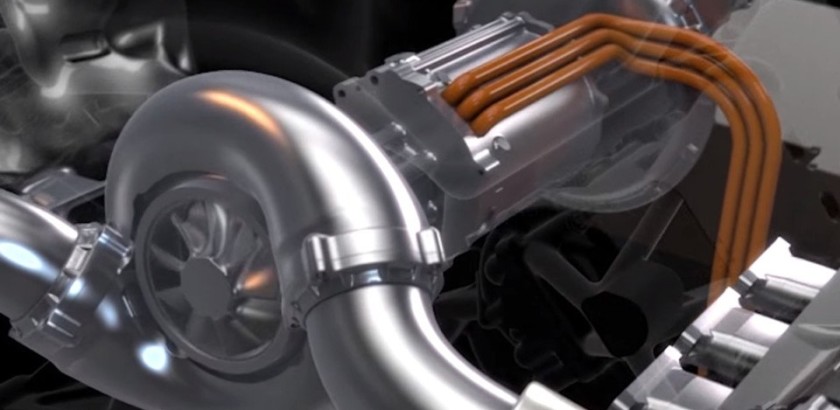Ferrari’s Electric Turbo Four-Cylinder Patent Application May Be the Solution to Turbo Lag
You may think a four-cylinder Ferrari is absolute sacrilege, but it wouldn’t be the first one out there. Back in the 1950s, the iconic Italian marque slotted inline-four engines in a wide range of their racing cars. However, no four-cylinder engine has ever made its way into a production Ferrari. At least not yet – this patent application may be a sign of Ferrari’s future intentions. AutoGuide came upon Ferrari S.p.A’s application for a new four-cylinder engine with forced induction by way of an electrically-operated turbocharger.
That makes the engine a bit different than the turbocharged units we’re used to. Instead of the exhaust gases feeding a turbine that mechanically spins a compressor to force more air into the combustion chamber, this design feeds exhaust gases through a turbine in the exhuast duct to power an electric generator. That energy is then sent to an electric driver motor that can either directly feed the wheels or run to an electrically-assisted air compressor. That compressor pulls more air into the combustion chamber, and you get more power.
Reducing turbo lag and improving exhaust sound
The main goal of this design is to eliminate turbo lag. As the patent application points out, “the sizing and control mode of a turbocharger are always a compromise between teh needs of the compressor and the needs of the turbine and between the need to limit “turbo-lag” and the need to provide a significant power increase.” In other words, you can have power or reduced turbo lag, but not both – at least with a normal design. Ferrari’s design uses electrical energy to help spool up the compressor on demand to force air into the engine on demand.
It’s not all about power, though. Electrically-controlled valves in the exhaust system allow Ferrari to manipulate the engine’s exhaust note. The engine control unit (ECU) can change the geometry of the exhaust system, including slowing down the turbine in the exhaust duct, to finely control the engine’s pitch. The end goal: creating a livelier exhaust note.
We’ll see if this four-cylinder engine actually makes its way under future Ferraris. Stay tuned to TFLcar.com for more updates! If you’re more interested in finding out about how Ferrari’s design works, check out their patent application below.
